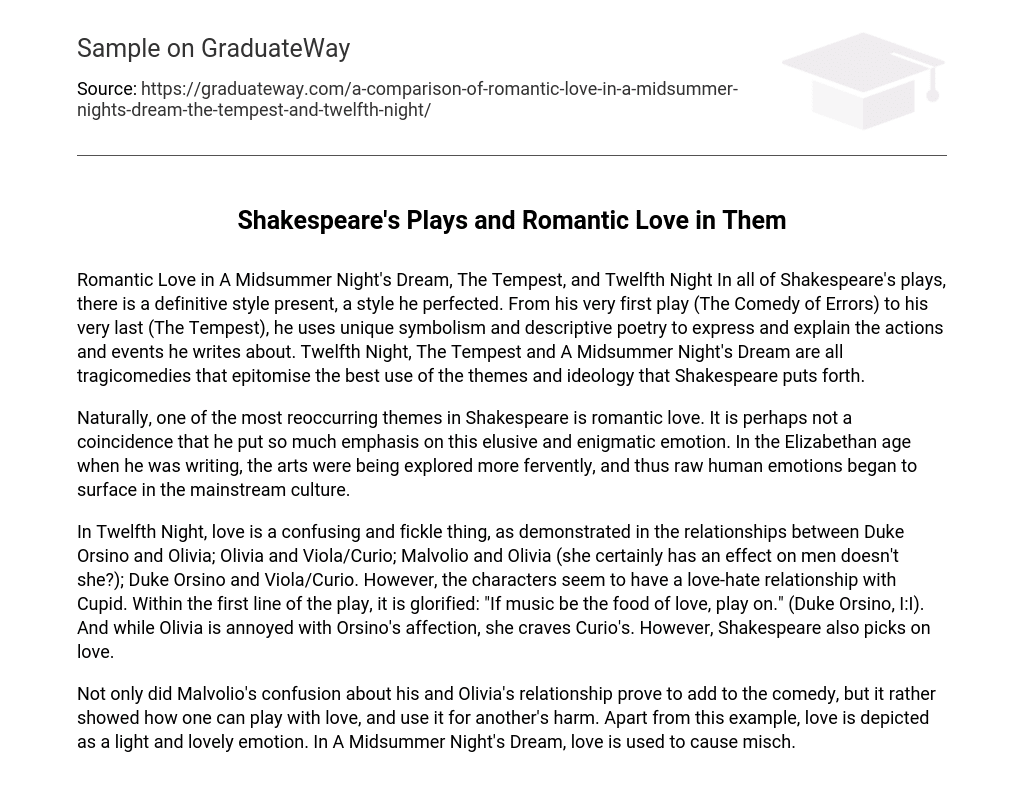Shakespeare’s plays, such as A Midsummer Night’s Dream, The Tempest, and Twelfth Night, prominently explore the theme of romantic love. Across his works, Shakespeare consistently showcases his unique and refined style by employing symbolism and descriptive poetry to depict the events and actions in his plays. Twelfth Night, The Tempest, and A Midsummer Night’s Dream are all examples of tragicomedies that effectively exhibit Shakespeare’s themes and concepts.
Undeniably, romantic love is a prevalent theme in Shakespeare’s works. The significance he placed on this elusive and mysterious emotion is likely not a mere coincidence. During the Elizabethan era when he was writing, there was an increased exploration of the arts, which in turn brought forth raw human emotions into mainstream culture.
In Twelfth Night, the play explores the complexities and unpredictability of love through various relationships: Duke Orsino and Olivia; Olivia and Viola/Curio; Malvolio and Olivia (who definitely has a captivating effect on men); Duke Orsino and Viola/Curio. Despite these relationships, the characters seem to have a tumultuous relationship with Cupid. The play begins by romanticizing love: “If music be the food of love, play on” (Duke Orsino, I:I). While Olivia is irritated by Orsino’s advances, she desires Curio’s affection. However, Shakespeare also satirizes love.
Malvolio’s confusion about his relationship with Olivia not only added to the comedy, but it also demonstrated how love can be manipulated to harm others. Aside from this instance, love is portrayed as a delightful and gentle emotion. In A Midsummer Night’s Dream, love is employed to create mischief.





